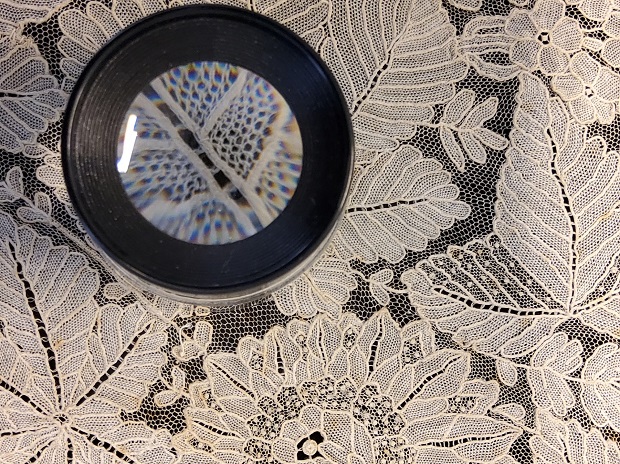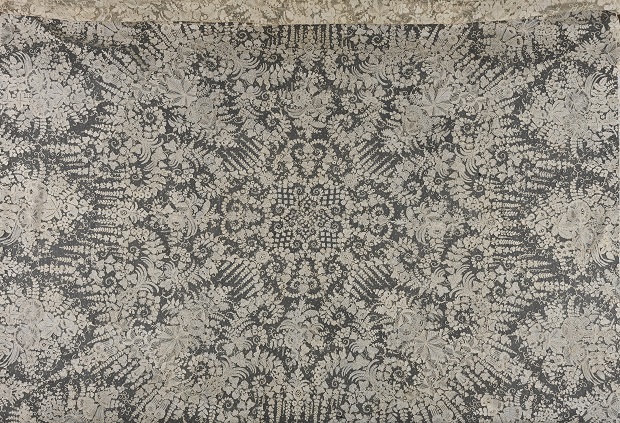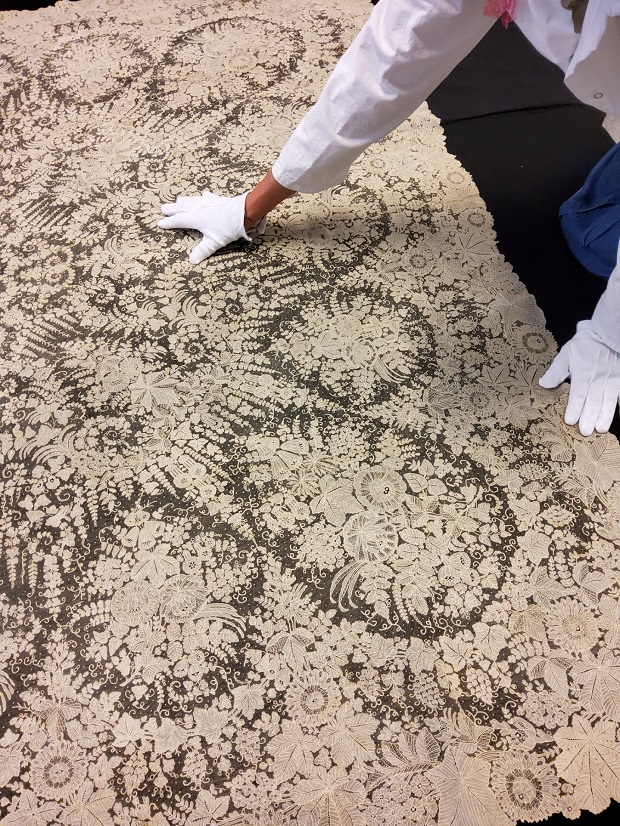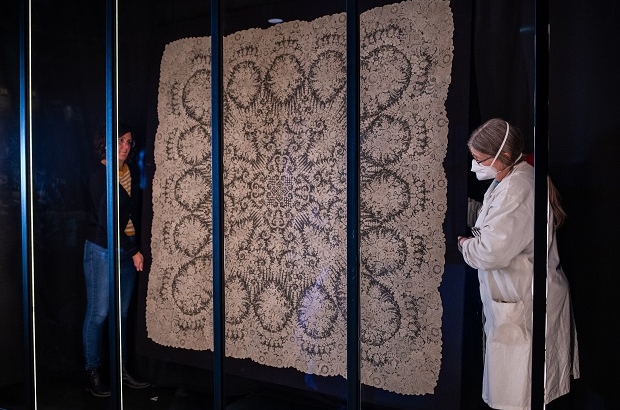- Daily & Weekly newsletters
- Buy & download The Bulletin
- Comment on our articles
Exceptional 19th century lace unveiled at the Fashion & Lace Museum in Brussels
A magnificent piece of lace goes on display at the Fashion & Lace Museum near the Grand Place from 12 November, thanks to an acquisition by the King Baudouin Foundation supported by the Marie-Jeanne Dauchy Fund.
The textile will be exhibited in the Lace Room at the Brussels museum until the end of January, when it will be presented at the foundation’s stand at the BRAFA Art Fair.
Estimated to have been made between 1850 and 1870, the infinitesimal detail of the Brussels-made piece is testament to Belgium’s historic textile industry.

From the 16th century, lace was mainly a specialty of Flanders and Venice and was produced with both of the most common techniques: bobbin lace and needle lace.
However, lace production evolved in the 19th and 20th centuries. More varieties of lace types emerged, including point de gaze (sometimes known as rose point) in Belgium. The skill and time needed for this technique is astounding: “A professional lacemaker might need an hour to stitch a petal as big as my thumb,” said co-curator Catherine Gauthier.
This explains why the size and complexity of this textile work would have required multiple lacemakers to be working on it simultaneously. It also presented a new challenge: each lacemaker would have had to be careful to use the same amount of tension on the thread consistently to create such perfect symmetry.

Measuring nearly two-by-two metres, the intricacy of the lace overwhelms the eye when gazing at it in person. The central motif quickly catches the viewer’s attention; an impossibly detailed pattern emerges, before making way for 16 perfectly symmetrical medallions.
Upon closer inspection, the pattern composition of the entire piece seamlessly blends different floral elements. Countless blossoms, leaves, vines, tendrils and branches creep across the lace in repeating designs; roses, dahlias, peonies, bellflowers, and hydrangeas tangle with vine garlands, grape clusters and chestnut leaves in a labyrinthine world of thread.
The size, symmetry, and finesse of the piece is breathtaking. Minuscule stitches cross each centimetre of the lacework in incredible detail. Almost perfectly square, the work measures 181x185 cm. The point de gaze technique used allows for a highly realistic portrayal of the ornamental flowers.

Yet an intriguing mystery surrounds the beauty of this acquisition, on loan to the museum. Its intended purpose remains unknown as it was too delicate to be a tablecloth and strangely ill-fitting for a cape or shawl. The King Baudouin Foundation is baffled as to what the textile work was created for.
“The piece was auctioned as a cape or lace cloak,” explained the museum’s spokesperson. “But what caught our attention was that its dimensions seemed strange for a cape or shawl. Our doubts were confirmed when we noticed that the central motif would not be positioned in the centre of the back when worn as a cape, contrary to typical styles.”
Gauthier added: “A similar piece of lace on display at the Victoria & Albert Museum in London is known to be a wedding veil, so it’s possible that this piece was a veil.”

However, particularly fine pieces of lace were sometimes commissioned to be exhibited as masterpieces, not sold as a garment. It is therefore possible that the piece was never intended for practical use.
After going on public display, the lace artefact will be partially restored and meticulously analysed, centimetre by centimetre, for any clues as to its function. “Come back in a few months to find out the results of our research,” prompts the co-curator.
The acquisition was managed by the King Baudouin Foundation’s Heritage & Culture programme.
Photos: (main image) ©Camille Crucifix; ©Musée Mode & Dentelle; ©Musée Mode & Dentelle; ©Drouot-Etude Couteau-Bégarie; ©Musée Mode & Dentelle



















